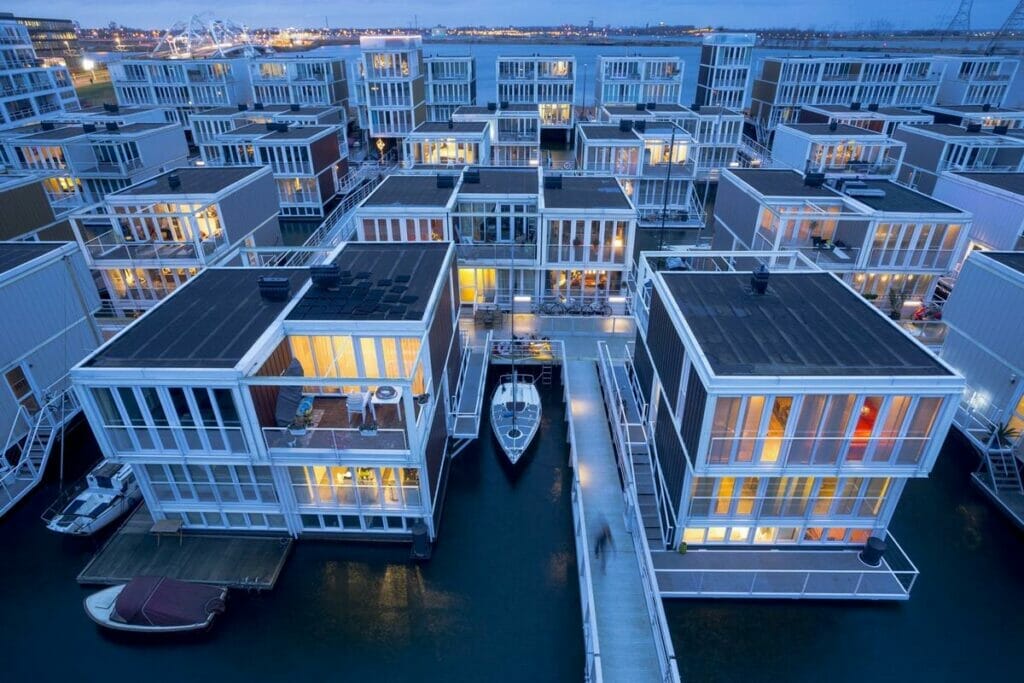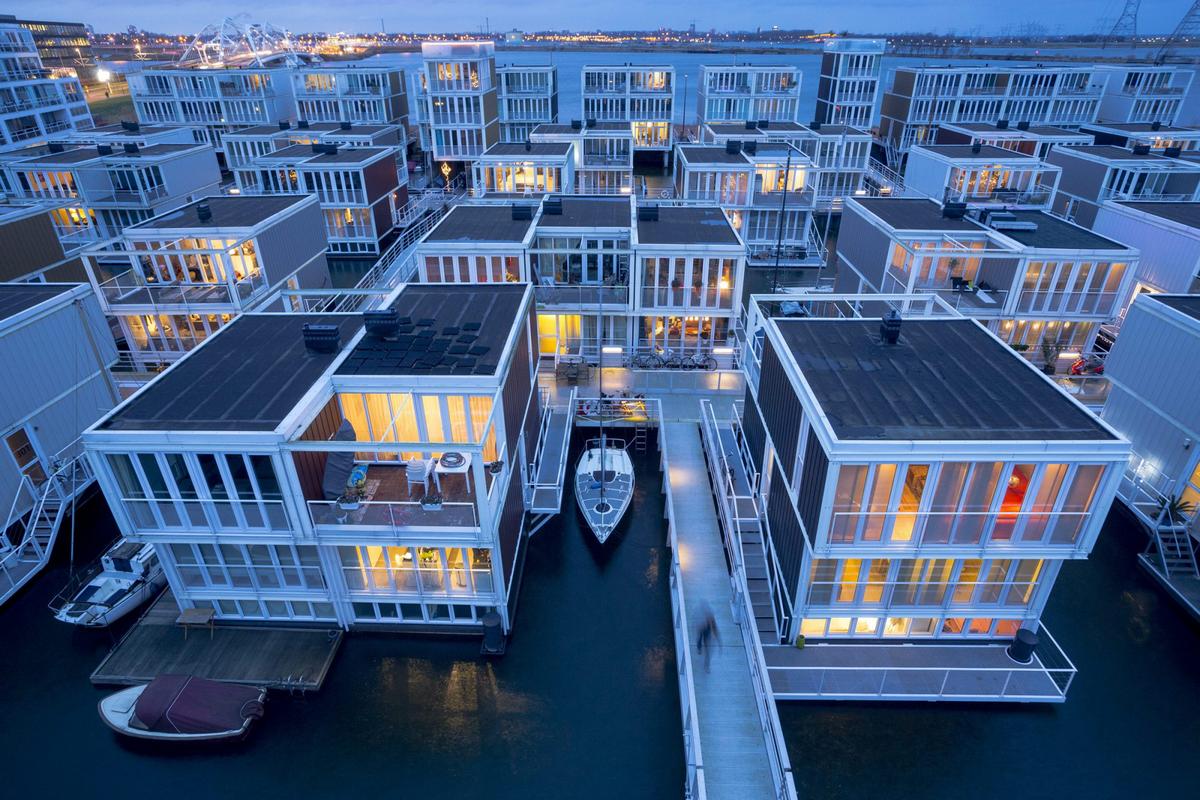
The Dutch have to deliver another masterpiece
God created the earth, but the Dutch created the Netherlands. The Dutch are faced with the historical task of having to deliver another masterpiece.
Rijkswaterstaat, provinces, municipalities and private enterprises are working on the replacement and renovation of bridges, viaducts and sluices. This Replacement and Renovation (V&R) task has a high priority. It concerns large numbers of infrastructure objects that are reaching the end of their operating lives. The Dutch would not like a repeat of images of the collapsed Grimburgwal or the closed Merwedebrug.
In addition to work relating to Replacement and Renovation, also work relating to the energy transition is in the pipeline for the infrastructure sector. The use of fossil fuels must be reduced and energy from, for example, floating offshore wind turbines could eventually replace energy from fossil fuels. This sustainable energy must be brought ashore via meter-thick cables or in the form of hydrogen. On land, adjustments to installations and new installations, such as charging stations, are required. The energy transition means even more work for the infrastructure sector.
With the increase in temperature, the sea level also rises. Predictions up to 2100 range from a few decimeters to more than two meters. Major adjustments to our infrastructure will therefore be necessary. Tasks in the context of climate adaptation increases the workload further. Will we keep it dry here or we will we soon all be floating on the water, just like the residents of the Waterbuurt in Amsterdam?
The bottleneck is in infrastructure
The same infrastructure companies often carry out the work for the V&R assignment, climate adaptation and the energy transition. Because of this, the bottle neck in achieving the tasks lies within the infrastructure sector. It is, therefore, bad news that many complain that infrastructure capacity is often not being used adequately. For example, a complaint frequently heard is that the process of bringing projects on the market takes too long, as a result of which available capacity remains unused. Another issue is that many find that project implementation should be accelerated because there is still so much work to be done.
Aim for FLOW in the bottleneck to accelerate with a quantum leap
A basic rule for achieving objectives is to make optimal use of the capacity of the bottleneck. If the bottleneck in achieving the above-mentioned objectives of society lies in the infrastructure sector, the focus must be on making the best possible use of this capacity. Mind you, all measures that do not help to make better use of the capacity of the bottleneck have no effect on achieving the end goals.
The concept of the bottleneck was introduced by Dr. Eliyahu Goldratt, a physicist who applied the principle that every system has only one limiting factor on management. Actions that make best use of the capacity of a systems bottleneck increase its output by a quantum leap. The example of a real bottle neck can make this clear. When you empty a bottle of water, its content turns into wild bubbling water flowing out interrupted by air bubbles flowing in, in regular intervals. You have just taken a measure that does not make use of the capacity of the bottleneck in the best possible way. If you, however, first insert a straw into the bottle all the way to the bottom and then empty the bottle, the water will run out quietly and four times as fast. An improvement by a quantum leap. you have now taken a measure that makes the best possible use of the limited capacity of the bottleneck.
Here you can see a beautiful demonstration of the concept of the bottleneck: https://youtu.be/mWh0cSsNmGY?t=20
The concept of the bottleneck is clear, but applying it in praxis requires insight and analyses. To get useful results the following questions must be answered:
- What is the system we are talking about?
- What is the purpose of this system?
- Given this objective, what is the bottleneck? (The bottleneck is only a limiting factor in relation to a goal.)
And the key question is: - How can we make use of the capacity of the bottleneck in the best possible way?
Aim for FLOW in the infrasector to improve with a quantum leap
The Replacement and Renovation Task, Climate Adaptation and Energy Transition are three objectives of the system society. In relation to these objectives, the bottle neck is in the infrastructure sector. And the key question is: how can we make use of the limited capacity of this bottle neck in the infrastructure sector in the best possible way.
As we have seen, many in the infrastructure sector feel that projects take too long to come onto the market and that once projects are on the market, execution should be accelerated.
In subsequent blogs, we will discuss how you can accelerate execution of projects and how you can make better use of the limited capacity of the bottle neck in the infrastructure sector. First experiences with, what we call, FLOW solutions have shown that quantum leaps in output can be realized. We will be happy to share these examples with you. With the use of the Project Portfolio Digital Twin you can run virtual simulations, that do not to interfere with current operations, to find out how the FLOW principles would work out in your organization. Also, software based on FLOW principles has become available that helps to implement FLOW solutions.
In the blogs we are going to discuss these examples and applications. We would appreciate it if you would help us with that. You can respond to this blog with your opinions, questions or ideas. We are particularly interested in cases. We will treat your input confidentially and use it to enrich our examples with your cases.
The Dutch infrastructure sector faces three major challenges. We believe that insights and techniques are available to deliver a masterpiece again with which the Netherlands can once more amaze the world. The Dutch create the Netherlands one more time.
Willem de Wit, Menno Graaf and Emmo Meijer
© 2021 Mobilé 4 flow & innovation

Founder & Managing Director of Mobilé 4 flow & innovation.
